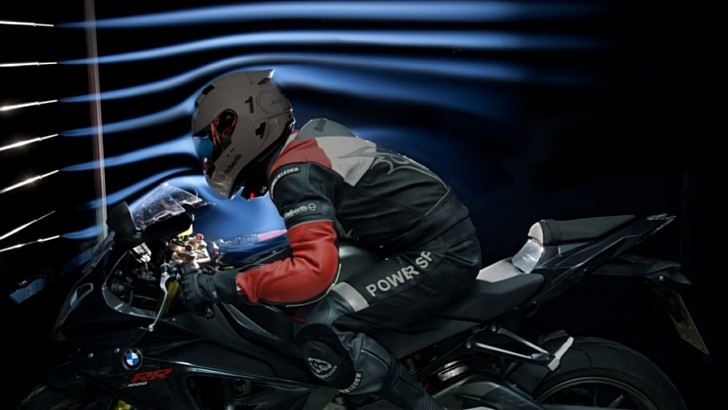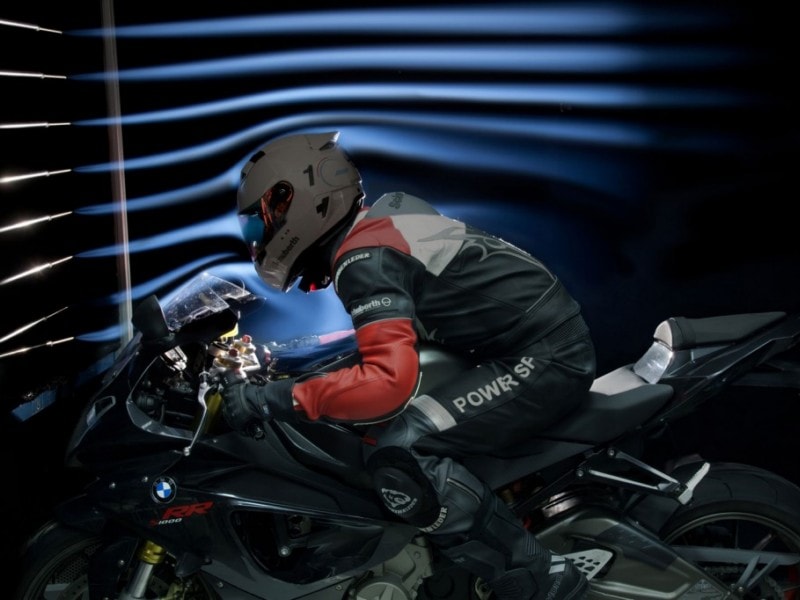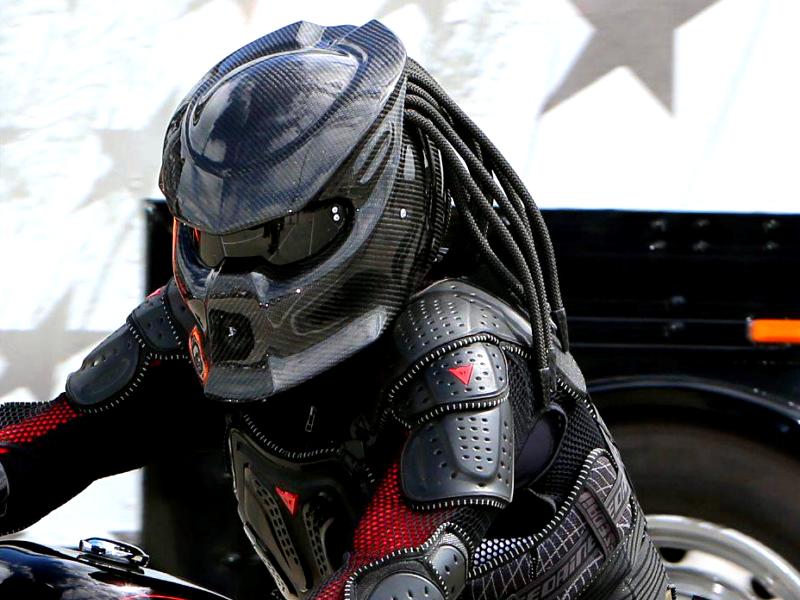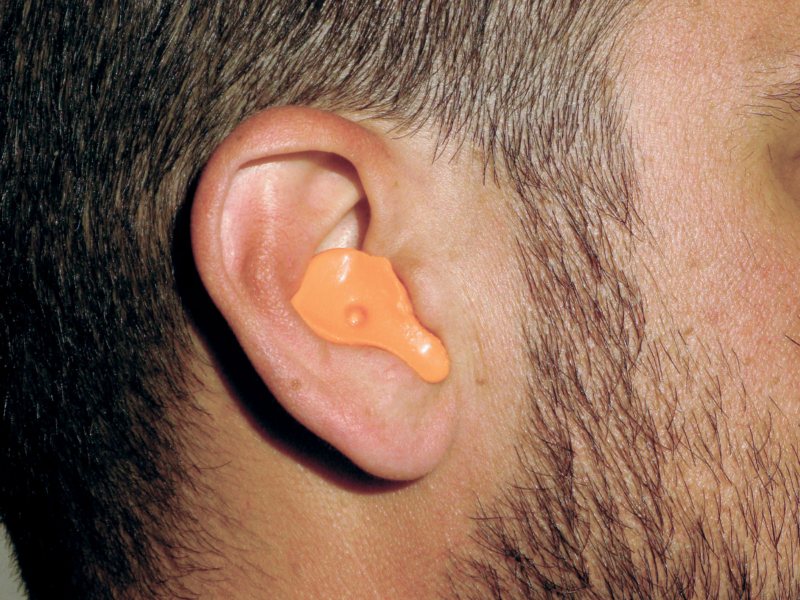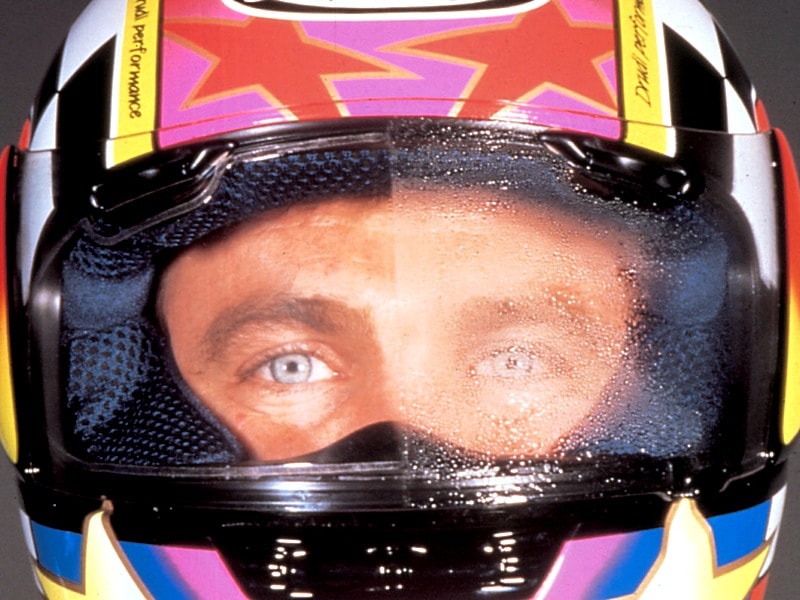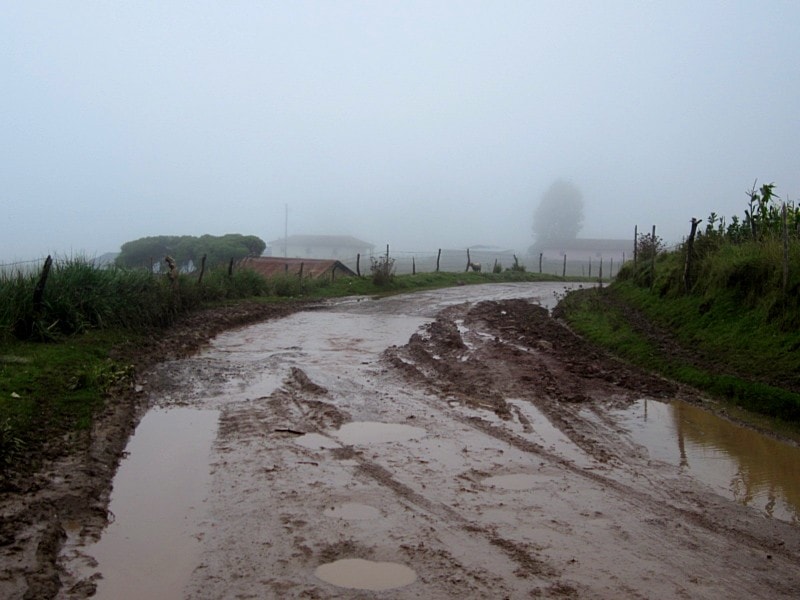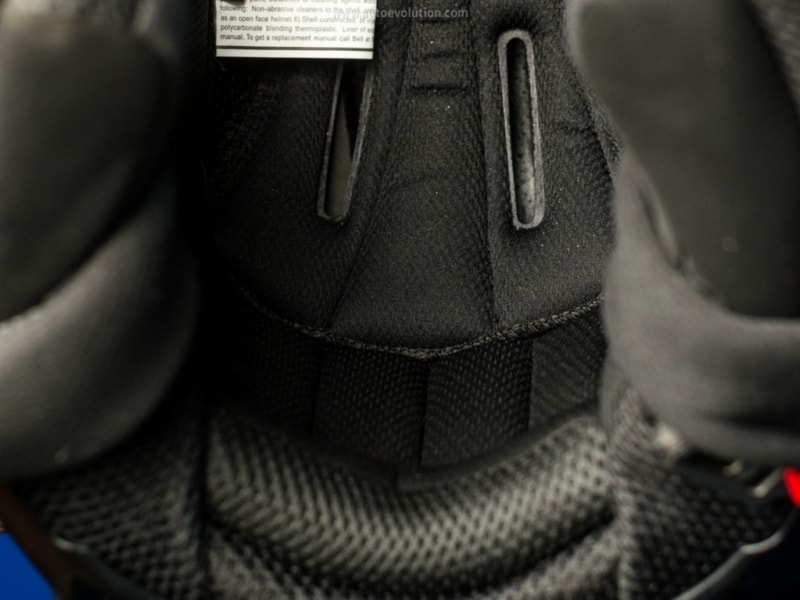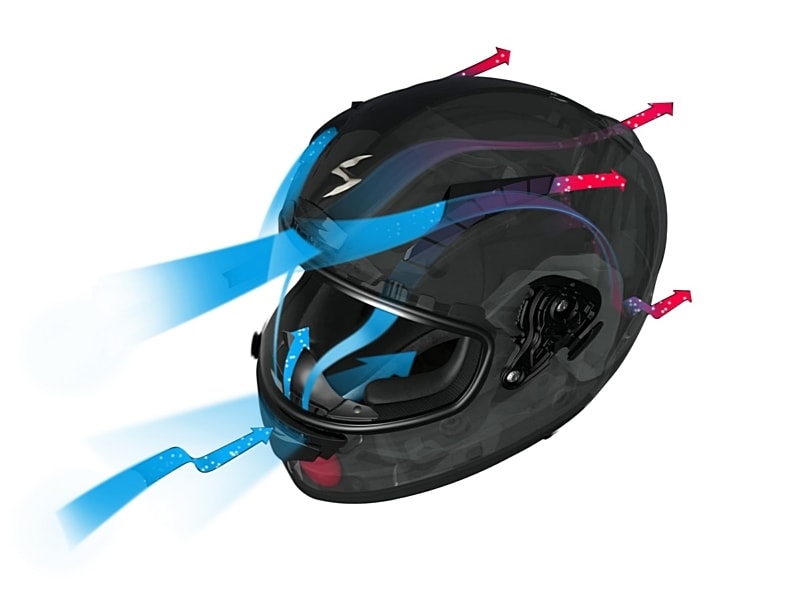Hi, and thanks for checking in for the second part of the How to Choose a Motorcycle Helmet tutorial. In the first episode, we cleared out some of the basic aspects one should be considering prior to buying a helmet: what type, safety certifications, sizes, and so on.
Now it's time to add the final clarifications to help you enjoy the best experience with your helmet, and we'll delve deeper into the comfort and passive safety areas.
On the noise side, there's a very strong debate between people who complain about noisy helmets and those who'd rather be able to hear absolutely everything around them. Fact is that prolonged exposure to noise is not healthy. Hearing damage can occur in case the rider is exposed to high noise levels for a long time (that is months or more, not hours).
Even more, some people might become fatigued after being exposed to abnormal noise levels, and a fatigued rider is usually a distracted rider, probably the last thing you'd like to happen to you. Some guys ride with ear plugs, while others would rather spend some more money on a quieter helmet. There is no right and wrong here, but most people would agree that the quieter the lid, the better the ride.
Now, a rough comparison between the various types of helmets would see the braincaps and ¾ helmets as the noisiest, followed by the flip-up (modular) ones, and the full-face, sport ones with the best aerodynamics and therefore, minimal wind noise.
However, in many conditions, especially when riding in the busy city traffic, it's better to be able to hear an incoming car and similar noises. I remember the story of a buddy who was riding in Argentina, and who had to stop in a very long line due to an accident ahead.
As he figured he wasn't going anywhere for at least half an hour or so, he stopped the engine and took off his helmet, only to hear tires screeching far behind him. Looking behind, he saw a large truck skidding towards the line of stopped cars.
Without hesitation, he threw his helmet into the grass on the side of the road and managed to push his bike down the few-feet-high embankment, thus saving his life. Moments after he went off the road, the truck slammed hard into the stopped cars, damaging several of them and causing multiple injuries. Needless to say that the guy would have been killed had he not heard the braking noise behind.
So, when it comes to wind noise, you can also do some web research on some of the helmets you'd like to buy, and at the same time consider your bike. If you ride a cruiser with a huge windscreen, then noise will most likely not be such an issue. However, if you ride a streetfighter, there's nothing between the wind and your head, so it's up to you to make a smart choice.
It also provides the brain with a lot of info many riders are not consciously aware of, but which are a vital component of the instinctual balance and road stance.
A helmet which impairs vision is to be avoided, and this goes for the vertical axis, too. Small visor slots force the riders to raise their heads to see the changing traffic lights in case they stop closer to them, while forcing them to bend their heads to check the instruments when riding.
This may not seem too much of a problem at first glance, but it can negatively impact the rider's awareness in a subtle way.
Anti-fog treatment for the visor is also crucial when choosing a helmet, especially for those who plan to ride in colder weather. Even during a summer downpour, as the temperature drops, the humidity in the rider's breath can condensate on the visor, obstructing the sight, with potentially dangerous consequences.
Most helmet visors are now anti-fog treated, if you're looking form the middle-price segment up. While some of them work pretty well under normal conditions, others offer poor defense against fogging.
A sure method to eliminate fogging is choosing a helmet with a Pinlock-ready visor. Pinlock is an additional lens which attaches to the interior of the visor and will not fog even during winter. I have ridden in temperatures way below 0° centigrade (32° F) and breathing out only caused fogging on the sunglasses.
While not all helmets are Pinlock-ready, I have seen riders who bought the lenses, which are supplied with the holding pins, and have drilled the visors of their helmets to retrofit the anti-fog lens. Making precise measurements prior to start drilling is mandatory.
To sum things up, a helmet which allows good hearing and the best vision is always to be preferred.
That's why more and more manufacturers make helmets with removable and washable liners, which are easy to take off, clean, and then put back in their place. Just place them in a washing bag and set your washing machine on the delicate cycle, then have them air dry up before you re-attach them.
Helmets with non-removable liners are a bit more difficult to clean and I'll post a guide on this in the future.
Well, to prevent excessive sweating, helmets have ventilation ports. However, it doesn't necessarily mean that holes in the helmet make it a cool one; some helmets have really poor ventilation and you'll be sweating (and swearing) a lot if you get one of these.
You can always ask the helmet dealer to take the helmet you feel like buying for a short ride. Make sure you have a balaclava and put it on before you try the helmet. Then take your bike for a spin and try to see if it “breathes” the way you want.
Cheaper helmets often have ports which cannot be closed, and this will be painful in really cold weather. At the same time, make sure you can easily operate the vent covers with gloved hands: it makes much more sense to be able to open or close them while riding than having to pull over, take one glove off and then set forth anew.
The weight of a helmet can affect a rider in more ways than one can figure out at a glance. First of all it's the neck strain: a helmet which is too heavy for a certain rider will require much effort from back and neck muscles, reducing comfort and possibly causing more severe injuries. It's no use to wear a heavy weight on the head: you should choose a helmet you feel ok with, from a mass point of view.
Most helmet manufacturer offer multiple shell sizes for their mid-range (and above) lids. This is because it would be indeed utterly silly to offer a helmet made with a standard, let's say XL shell, loaded with lots of EPS to fit an S head.
Do not be afraid to ask the helmet retailers whether they have different shell sizes for your lid in case you feel in need for something different. At the same time, many higher-end helmets come with different sizes for the cheek pads, to provide a snug fit. Make sure you check them out, too.
In case the helmet you're testing feels a bit too snug, it's up to you to judge whether you need another bigger model: liners usually break in after some time, and choosing a snug one might turn out to be the best-fitting option after one year or so.
If you wear glasses, please make sure your helmet liner has the special design to accommodate them, namely some grooves where the braces go. Put on the helmet, then your glasses: if it feels uncomfortable now, it will not grow better with time. In fact, your head will hurt in 10 minutes or so.
Finally, one more way to decide on the helmet size is the “finger check”: if your index finger can easily go between your head and the liner, the helmet may be too large. Always remember that motorcycle helmets are supposed to offer a snug fit on the riders' heads, and the space in between is a hazard in case of a crash.
If you care about your head, it's usually best to avoid buying a used helmet. A damaged helmet may not show exterior signs: the performance in case of an impact may be reduced to almost zero in some cases, nullifying its very purpose.
Now, you're ready to check with your nearest dealer and choose your new lid. Ride well, and ride safe!
You can also read the first part of the How to Choose a Motorcycle Helmet guide in case you missed it.
Senses are vital
When riding a motorcycle, being aware of what's actually happening around the bike is vital. Being able to analyze the multitude of factors which may develop into an emergency situation is a very good asset, and for this, a rider's senses must not be diminished. We're speaking here about sight and hearing.On the noise side, there's a very strong debate between people who complain about noisy helmets and those who'd rather be able to hear absolutely everything around them. Fact is that prolonged exposure to noise is not healthy. Hearing damage can occur in case the rider is exposed to high noise levels for a long time (that is months or more, not hours).
Even more, some people might become fatigued after being exposed to abnormal noise levels, and a fatigued rider is usually a distracted rider, probably the last thing you'd like to happen to you. Some guys ride with ear plugs, while others would rather spend some more money on a quieter helmet. There is no right and wrong here, but most people would agree that the quieter the lid, the better the ride.
Now, a rough comparison between the various types of helmets would see the braincaps and ¾ helmets as the noisiest, followed by the flip-up (modular) ones, and the full-face, sport ones with the best aerodynamics and therefore, minimal wind noise.
However, in many conditions, especially when riding in the busy city traffic, it's better to be able to hear an incoming car and similar noises. I remember the story of a buddy who was riding in Argentina, and who had to stop in a very long line due to an accident ahead.
As he figured he wasn't going anywhere for at least half an hour or so, he stopped the engine and took off his helmet, only to hear tires screeching far behind him. Looking behind, he saw a large truck skidding towards the line of stopped cars.
Without hesitation, he threw his helmet into the grass on the side of the road and managed to push his bike down the few-feet-high embankment, thus saving his life. Moments after he went off the road, the truck slammed hard into the stopped cars, damaging several of them and causing multiple injuries. Needless to say that the guy would have been killed had he not heard the braking noise behind.
So, when it comes to wind noise, you can also do some web research on some of the helmets you'd like to buy, and at the same time consider your bike. If you ride a cruiser with a huge windscreen, then noise will most likely not be such an issue. However, if you ride a streetfighter, there's nothing between the wind and your head, so it's up to you to make a smart choice.
Vision
Being able to see as much as possible when wearing a helmet is also critical. A helmet with a wide visual field is always preferable to a narrower one. Peripheral vision plays a very important role in the rider's positioning on the road, especially when surrounded by multiple vehicles.It also provides the brain with a lot of info many riders are not consciously aware of, but which are a vital component of the instinctual balance and road stance.
A helmet which impairs vision is to be avoided, and this goes for the vertical axis, too. Small visor slots force the riders to raise their heads to see the changing traffic lights in case they stop closer to them, while forcing them to bend their heads to check the instruments when riding.
This may not seem too much of a problem at first glance, but it can negatively impact the rider's awareness in a subtle way.
Anti-fog treatment for the visor is also crucial when choosing a helmet, especially for those who plan to ride in colder weather. Even during a summer downpour, as the temperature drops, the humidity in the rider's breath can condensate on the visor, obstructing the sight, with potentially dangerous consequences.
Most helmet visors are now anti-fog treated, if you're looking form the middle-price segment up. While some of them work pretty well under normal conditions, others offer poor defense against fogging.
A sure method to eliminate fogging is choosing a helmet with a Pinlock-ready visor. Pinlock is an additional lens which attaches to the interior of the visor and will not fog even during winter. I have ridden in temperatures way below 0° centigrade (32° F) and breathing out only caused fogging on the sunglasses.
While not all helmets are Pinlock-ready, I have seen riders who bought the lenses, which are supplied with the holding pins, and have drilled the visors of their helmets to retrofit the anti-fog lens. Making precise measurements prior to start drilling is mandatory.
To sum things up, a helmet which allows good hearing and the best vision is always to be preferred.
Ventilation and washability
Even if you plan to be a Sunday rider, the helmet liner will become dirty and will need cleaning. Since you're going to spend some hard-earned money, you'd better be able to enjoy your helmet, and a liner which reeks of sweat mixed with dirt and dead skin is not exactly enjoyable.That's why more and more manufacturers make helmets with removable and washable liners, which are easy to take off, clean, and then put back in their place. Just place them in a washing bag and set your washing machine on the delicate cycle, then have them air dry up before you re-attach them.
Helmets with non-removable liners are a bit more difficult to clean and I'll post a guide on this in the future.
Well, to prevent excessive sweating, helmets have ventilation ports. However, it doesn't necessarily mean that holes in the helmet make it a cool one; some helmets have really poor ventilation and you'll be sweating (and swearing) a lot if you get one of these.
You can always ask the helmet dealer to take the helmet you feel like buying for a short ride. Make sure you have a balaclava and put it on before you try the helmet. Then take your bike for a spin and try to see if it “breathes” the way you want.
Cheaper helmets often have ports which cannot be closed, and this will be painful in really cold weather. At the same time, make sure you can easily operate the vent covers with gloved hands: it makes much more sense to be able to open or close them while riding than having to pull over, take one glove off and then set forth anew.
Weight and overall comfort
Finally, you should be feeling alright with the helmet on your head and strapped well in place. Even though motorcycle riding was never a benchmark for comfort, this does not mean you have to turn it into a nightmare.The weight of a helmet can affect a rider in more ways than one can figure out at a glance. First of all it's the neck strain: a helmet which is too heavy for a certain rider will require much effort from back and neck muscles, reducing comfort and possibly causing more severe injuries. It's no use to wear a heavy weight on the head: you should choose a helmet you feel ok with, from a mass point of view.
Most helmet manufacturer offer multiple shell sizes for their mid-range (and above) lids. This is because it would be indeed utterly silly to offer a helmet made with a standard, let's say XL shell, loaded with lots of EPS to fit an S head.
Do not be afraid to ask the helmet retailers whether they have different shell sizes for your lid in case you feel in need for something different. At the same time, many higher-end helmets come with different sizes for the cheek pads, to provide a snug fit. Make sure you check them out, too.
In case the helmet you're testing feels a bit too snug, it's up to you to judge whether you need another bigger model: liners usually break in after some time, and choosing a snug one might turn out to be the best-fitting option after one year or so.
If you wear glasses, please make sure your helmet liner has the special design to accommodate them, namely some grooves where the braces go. Put on the helmet, then your glasses: if it feels uncomfortable now, it will not grow better with time. In fact, your head will hurt in 10 minutes or so.
Finally, one more way to decide on the helmet size is the “finger check”: if your index finger can easily go between your head and the liner, the helmet may be too large. Always remember that motorcycle helmets are supposed to offer a snug fit on the riders' heads, and the space in between is a hazard in case of a crash.
If you care about your head, it's usually best to avoid buying a used helmet. A damaged helmet may not show exterior signs: the performance in case of an impact may be reduced to almost zero in some cases, nullifying its very purpose.
Now, you're ready to check with your nearest dealer and choose your new lid. Ride well, and ride safe!
You can also read the first part of the How to Choose a Motorcycle Helmet guide in case you missed it.
